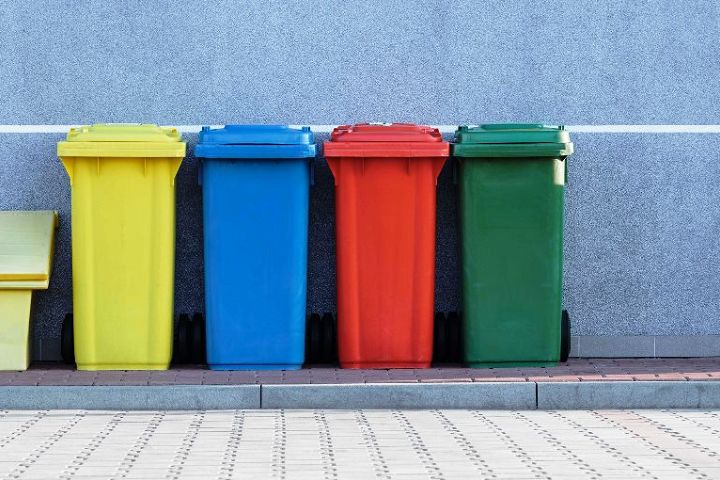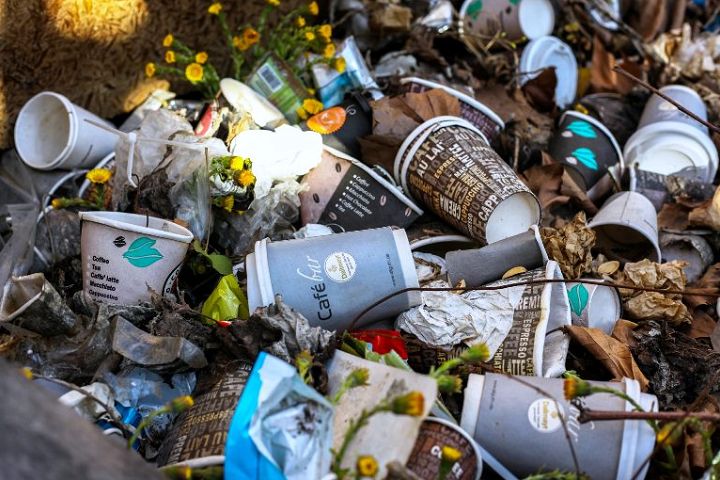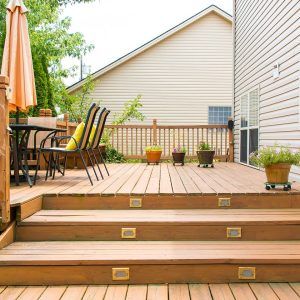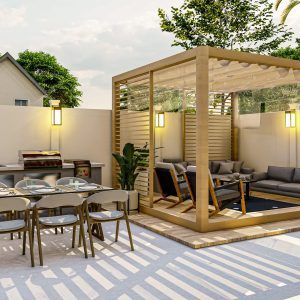If you’re new to recycling, you must have noticed that the recycling bins come in different colors, and this can be confusing.
What are the different colored bins for? To answer that question, we need to look at the various containers and their work:

Blue bins
A blue recycling bin signifies the act of saving the trees and ecosystem. Some of the items you can put in this bin include; aerosols, food tins, cardboards, papers, phone directories, tetra pack packaging, glass bottles, jars, aerosols, envelopes, and other types of glasses.
Green bin
The green bin collects organic materials. Although organic materials decompose over time, tossing them away is wrong, as you can recycle them and make valuable items.
The items you can put in this bin include; cooked and raw foods such as meat, fruits, dairy, and vegetables, paper plates, napkins, pizza boxes with cheese, leaves, weeds, grass cuttings, and cut flowers.
Items that should never find their way in the green bin include; cigarette butts, vacuum cleaner bags, and their contents, gravel or rocks, ashes, clothes, nappies, medical waste, oil, plastic, or glass.
The contents of this bin are sent to organic fertilizer for anaerobic digestion and composting.
Red bins
These carry materials with a thin plastic coating in them. In most cases, the bins are used to gather landfill wastes.
Some of the common materials you will find in these bins include: sticky tapes, plastic bags, cling wrap, polystyrene, and glazed wrappers.
White bins
The white bin is for collecting soft plastics. These include materials coated with plastics or made with a thin plastic lining. The best candidates for these bins include: biscuit packets, plastic bags, cling wraps, frozen foods, bubble wraps, and confectionary bags.
Yellow/black/grey bins
The yellow bin is said to be the most encompassing bin you can have in your home. The reason for this is because it’s a mixed recycling bin where you can damp different things. While this bin is the hungriest of them all, it doesn’t mean that you can toss anything in it, as it can be hazardous to you.
The yellow bin can take almost anything except; rocks, bricks, paint cans, motor oil, medical waste, electrical goods, and hazardous waste.
After the waste from these bins is collected, it’s sent to the modern landfills where it’s turned into fuel.
Put the right waste in the right bin.
Putting waste in the wrong bin contaminates the recycling process and increases the cost of waste disposal, so you should always think twice before disposing of any waste. If you aren’t sure where to toss the waste, sit back and research first. One of the best resources you can use to your advantage is this one.
You don’t want to move with haste or damp the waste for the sake of damping, as you might complicate the recycling process.
If you go through the above resource and still can’t figure out where to dispose of a specific item, take it to a charity shop or a re-use organization. They will accept the item and dispose of it correctly for you.

Types of recycling bins
Did you know the different colored bins are of different types? They include:
Single stream waste and recycling bin
This one has only one recycling container, and all the recyclable items go into this container before you sort them out. The beauty with this is there is no confusion about what goes where as you dispose of everything in one container.
The best place to locate this bin is in an area that experiences high traffic.
Double stream recycling bin
If you don’t want to go through the trouble of sorting out the waste, go for the double stream recycling bin. This bin has two slots or containers that isolate the recyclable items, ensuring that they don’t get contaminated.
Triple stream waste and recycling bin
As you can guess, this one has three slots, giving you the benefits of a double stream waste and recycling bin and extra space for the unrecyclable waste.
Since you have many slots to work with, you effectively boost your recycling efforts without diverting people to various waste and recycling bins.
Quad stream waste and recycling bin
This bin combines all the waste streams into one so that you don’t have to get individual recycling bins. The four streams of recycling bins are for papers, waste, bottles, and organics.
The streams are unobstructive but robust such that they can handle high traffic and large loads and last for as long as possible.
Tray top recycling and trash bins
These are a combination of trash cans, recycling bins, and tray holders. This makes them the perfect addition to high-traffic areas such as food courts, lunchrooms, and cafeterias.
Wall mount bins
From their name, you mount these on a wall. This comes in handy as it saves on space, keeping the floor area below clean and less cluttered. They come in different sizes, and it’s up to you to buy the right one.
Automatic trashcans
This is a trashcan that you don’t need to touch to dispose of your waste. When you approach the bin to dispose of the trash, the lid automatically opens up, then closes after disposing of the waste.
Despite this leaving your hands clean and uncontaminated, it keeps the odors locked in the bin, so you don’t have awful smells in the house or office.
Lockable shred bins
You use this bin to store confidential and sensitive documents before shredding them. The best place to place this bin is next to your desk at the office. This way, you can dispose of the confidential and sensitive documents without worrying someone will access them before shredding them.

There you go!
As much as you want to keep the environment clean and safe, to get the most from the bins, you need to use the correct containers and place them in strategic areas where they are easy to access and aren’t a hindrance.




